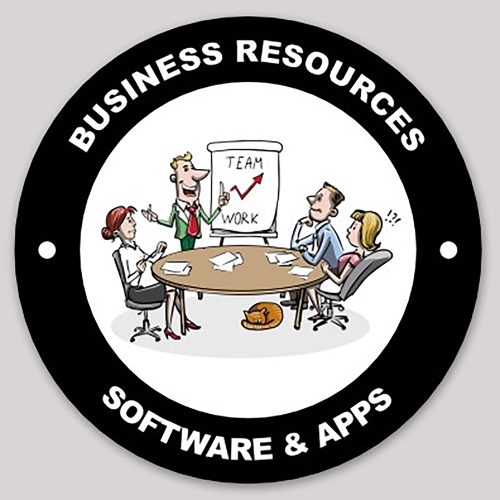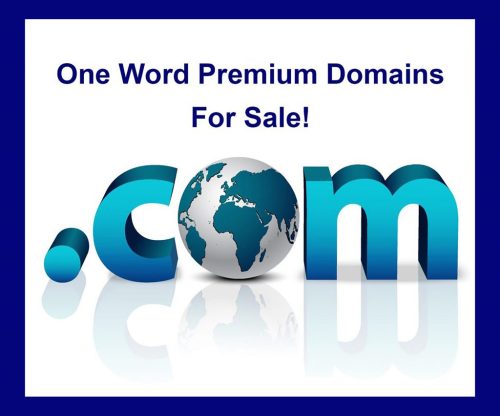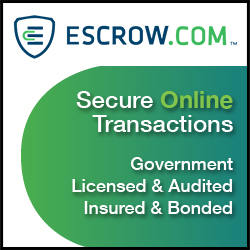
What is eCommerce?
eCommerce definition is a business model conducted online. The most popular example of eCommerce is online shopping, which is defined as buying and selling of goods via the internet on any device. However, eCommerce can also entail other types of activities, such as logistics, payment gateways, online auctions, online shopping, online ticketing, and internet banking.
Imagine having a website that can offer all these things and more, imagine having a site similar to Amazon, Alibaba, DHGate, Ali Express, Ebay, all under one roof. Imagine having a directory of retailers, wholesalers importers and exporters and logistic companies.
eCommerce is the fastest growing retail market and was projected to hit $4.135 trillion in sales in 2020
A new trend has also arisen through Mobile commerce, where more and more people are using their phones to buy online. This domain name could be an app aswell as a static website it could cater for mCommerce as it is known. mCommerce is gaining more momentum as a rapidly growing new avenue of eCommerce that’s mostly driven by the expanding market and influence of smartphones and millennials’ comfort with shopping online.
It has been speculated that since 2018, the mCommerce sector has increased sales by a 39.1% compared to the previous years.
Different eCommerce Business Models?
eCommerce is typically defined into three different categories, Business to Business (B2B), Business to Consumer (B2C), and Customer to Customer (C2C).
- Business to Business (B2B) is when a business sells to another business. This is typically office equipment, stationery and inventory such as food or merchandise for the hospitality sectors. Normally B2B companies provide a trade prices per unit if customers buy in bulk. This not only encourages business to buy more as an incentive to save money, it also has room to make a profit margin on resale.
- Business to Consumer (B2C) is the most commonly thought where merchants sell to consumers typically in the hospitally and retail sectors such as pubs, restaurants, retail shop. An example of the B2C would be supermarkets where consumers buy their shopping but would not neccessarilly buy in bulk.
- Consumer to Consumer (C2C) is where a person rather than a business sells to make a profit this typically is a person looks to resell an item to another consumer, through social media like Instagram and Facebook or on marketplaces like eBay and Craigslist, this can be a lucrative business for selling items that you no longer want.
Pros of eCommerce
eCommerce is an an essential way of eyeryday life and has explosive growth in the past couple of years. Businesses are taking advantage of the numerous benefits of eCommerce, the most notable of which include:
- Global market. A global market is where a business has a physical address and physical store. This type of store has imitations if it is not online and may be limited by a geographical area it can serve. An online store on the other hand is able to serve consumers globally or in their targeted regions. Diversifying from Local to Global offers a greater advantage for the consumer. In 2018, 11.9% of global retail sales came from online purchases and this is only set to increase yearly.
- Availability. An advantage to having an online store one does not have the same overheads as a physical store, not need to pay rent for your premises, rates and heating bills. Running an online business you can set your hours to suit you and talk with your customers using chat widgets. Your store potenially could be open 24/7/365.
- Reduced costs. Having a business online you essentially are reducing your running costs. Obviously you have to pay for the hosting and management of a website and unless you have a warehouse you do not need to hire as many staff. You can even hore virtual assistants rather than emply people. eCommerce costs go to warehousing and product storage, however you can eliminate that by having a dropshipping business and enjoy even lower upfront investment requirements. Merchants that can save on operational costs, can offer better deals and discounts to their customers.
- Inventory. eCommerce business providing it is done through dropshipping or fullfilment whereby an organisation such as warehouse, store, pack and ship your inventory on your behalf through automation management by using electronic tools to accelerate ordering, delivery and payment procedures. This business model is saving businesses billions in operational and inventory costs each year.
- Geo Targeting. With access to social media platforms and PPC advertising you can set the audience you wish to target. Algorithms will track users searching for specific items and will draw attention to your offers. With a wealth of customer data and an opportunity to keep an eye on customer buying habits as well as the emerging industry trends, eCommerce businesses can stay agile and shape their marketing efforts to provide a better-tailored experience and find more new customers. Imagine fine tuning your audience by age, gender, location and interests, imagine how successful you can be selling your invontory to people that are actively lloking for what you are selling.
- Niche markets. Running a niche brick-and-mortar business can be difficult. Imagine being in the middle of the desert how are people going to find you? Having the know how and being online you can easily implement exact march searchable kewyords and phrases in your SEO by scaling a niche product to become popular is effortful. Having a place where businesses can tap into a global marketsuch as an online directory eCommerce retailers can build a highly profitable niche business without any further investment. Businesses can save on costly website hosting and management fees by having landing pages with their inventory under one hub. Using online search capabilities, customers from any corner of the world can find and purchase your products. This is especially true if you have a large directory of categories that include niche products.
- Internet. As long as you have a computer and internet you can work virtually anywhere in the world without worrying about running costs of a physical bricks and mortar business. Often, running an eCommerce business means that you don’t need to sit in an office from 9 to 5 or suffer through a commute day-in and day-out. A laptop and a good internet connection is all it takes to manage your business from anywhere in the world.
How to Start an eCommerce Business?

There are a number of ways you can set up an ecommerce business, one is to build a website which takes anything from 12 to 18 months to be ranked by search engines for get you to the first page of Google ultimately. The other way is to sign up with an already established site where they offer landing pages and subdomain pages so that one can list inventory. There also dropshipping sites that offer sub domain pages. Which ever route you choose with one being building an ecommerce store from scratch you need to dedicate time and money in order for your store to be successful. Although you can set up a an actual online relatively easily and quickly, there are many months of extensive SEO that needs to be done when launching and growing a profitable eCommerce business. SEO is very complex multi-layered process involving different strategies and it takes many months of hard work to get your store seen.
Launching
Launching a website is more complex than what people realise, simply activating and publishing a website will only make your site float in cyber space. You need to have knowledge of SEO and you need to also generate backlinks. You also need to definine your key performance indicators upfront which will help you track your progress and performance and fix any issues as they emerge. Other important things to take care of include setting up your social media profiles, getting your email marketing ready, installing Google Analytics, doing keyword research, defining your shipping strategy and finalizing the launch promotion plan.
Sourcing
Deciding what products to sell is one of the first steps to starting an online business. One needs to research what products are profitable and trending, or if you have a new invention you have do a lot of advertising and marketing. You may want to sell white label products that have your company band name or you may want to be unique and sell something that no one else is selling, either way you need to establish trust with your audience and having a brand name that people recognise is an important fact in building a successful business.
It is important that your product have healthy profit margins. Once you have decided on the product you need to find manufacturers that you can source your product from. You may decided on having a factory of your own and warehouse or you can outsource you work and have manufacturers do the work for you. You may even want to sell other peoples products and simply drop ship. There are four main methods of sourcing products and inventory are manufacturing, wholesale and dropshipping or making it yourself.
Research
With every new business you have to have a business plan and analyse your product idea and the most important areas you need to research will be your competition, pricing strategy, and your unique value proposition. A business plan will help you visualize your growth strategy and identify any potential threats or obstacles.
Branding
Key elements of branding your products and your your store is fundemetally your brand name and your domain name. Having an exact match searchable keyword domain name will get you traffic much faster than a brand name. With a brand name you have to do extensive advertising and marketing to get your audience to recognise your brand, this includes haveing a unique and memorable logo. Getting your brand spot on from the start can help accelerate the growth and conquer the hearts of potential customers. You also need to have knowledge of search engine optimisation (SEO) before turning your attention to building the store.
Selling Strategies
There are a number of ways you can sell online.
- You can build your own website from scratch or use web builders, which takes time to get ranked by search engines and you need to dedicate an lot time optimising the site, including advertising and marketing. Designing from scratch you need to know coding whilst the later is done for you templates.
- You could use off the shelf eCommerce platforms such as Shopify but you will find most website hosting companies offer online shops that you drag and drop your products and integrate dropshipping.
- Sell on websites that are already ranked such as directories simliar to dhgate, amazon, ebay, alibaba to name a few.
- You could sell on social media platforms such as Facebook and Instagram
- Marketing you store takes time and money. If you are not an expert digital marketer, getting you store off the ground and in front of a targeted audience can be difficult and you may have to hire a company to promote your store on your behalf. You should also experiment with regularly expanding or refreshing your inventory. Remember you need to put the work in to get money out. An online store can be daunting but offering an already done for you subdomain can be beneficial if your are starting out. Starting small and gradually expanding is one option to consider. Start you business on already established websites such as Amazon, Alibaba, Ali Express, DHGate and you never know even on Ecommerce.com
Final Thoughts.
For a startup www.ecommerce.com could be ideal marktetplace as a way for any business to be listed and found quickly, especially if they are a newly branded name. Most businesses need a gentle push to get more traffic, imagine being listed on a website that people would be actively be using to promote their brands or simply wanting to buy products from. This website could also list all payment gateways all under once roof helping businesses find their ideal banking system quickly and easily. There is a multitude of business models that can be developed around this domain name.
As an example Alibaba is one of the most prominent Chinese technology names around the world and has a market value of about $463 billion. So far this year, its stock price has risen about 3.6 percent with shares hitting highs in June. You could be the next Jack Ma or Jeff Bezo (Amazon).
10 biggest e-commerce companies in the world are (sorted by revenue):
- Amazon ($386.06 billion)
- JD.com ($82.2 billion)
- Alibaba ($56.15 billion)
- Suning.com ($38.06 billion)
- Meituan-Dianping ($13.7 billion)
- Rakuten ($11.6 billion)
- eBay ($10.8 billion)
- Wayfair ($9.13 billion)
- Zalando ($7.26 billion)
- Coupang ($6.23 billion)
Hence what the owner of this domain is asking for is chump change compared to the perceived equity this domain name can bring.
Owning www.ecommerce.com you can be in control of the global market and have all businesses all under one roof with the largest directory in the world. You could have a platform such as Amazon and combine it with a business model like Ebay with an auction feature. You could also be a dropshipper. Having a directory of all businesses around the world, from importers, exporter. manufacturers, warehouses, dropshipers, logistic companies where by you could charge for advertising space and make millions. This domain name could the biggest website in the world. You could also offer services such as Advertising, SEO and Marketing, ideal if a business is new and wants to be found relatively quickly.
This domain name would be ideal for:
- Startups, or entrepreneurs starting their own business.
- Domain Investors that may want to develop their own business model or established businesses that may want to secure the domain and point to their website.
- eCommerce Dropshipping Business (B2B) Dropshipping are packaged and distributed by the third party company, and the owner(s) of the dropshipping site never come into contact with a product, they just take a small percentage or commission from the person or business who is actually making and distributing it.
- eCommerce Payment Gateways, such as stripe, gocardless.com, paypal etc.
- eCommerce Online Store (B2C) Such a Amazon.
- eCommerce Wholesalers (B2B) A wholesaler acts like a middle man between a manufacturer and a retailer.
- eCommerce Consumer to Consumer (C2C) With consumer-to-consumer selling, there’s no business involved at all, and it’s usually a pretty casual setup. Think of a garage sale, or a platform like eBay.
- eCommerce Consumer to Business (C2B) This is where a consumer sells their services to a business. Freelancers are the perfect example of this.
- Subscription Services (B2C or B2B) Subscription boxes all work slightly differently, but basically involve signing up to receive a different type of a product that you like each month. (Typical versions of this could be wine or book clubs).
- Private Labeling and Manufacturing (B2B or B2C) Any business or individual doing private labeling and manufacturing is one that is basically just carrying out all the presale stages in-house. That’s to say they’re making, packaging and then selling the goods directly to the end customer.
- While Labeling (B2B) Companies operating on a white labeling business revenue model rebrand (or ‘label’) products purchased from a manufacturer, and sell them on as their own products.
- Manufacturing (B2B) is the making of goods by hand or by machine. Items used in manufacture may be raw materials or component parts of a larger product. The manufacturing usually happens in a factory on a large-scale production line of machinery and skilled labour.
- Rent to Loan (B2B, B2C & C2C) Rent to Loan is when the customer is only paying for use of their product or service, rather than to buy it outright. An example of B2C is car rentals.
- Freemium – A freemium payment model is one that you typically only see used by digital products. With a freemium business model, you can sign up to a free version of the product, which has reduced functionality. Spotify is a classic example of a business operating on a freemium revenue model.
- A vendor-specific website (one brand seller) is a dedicated website which only sells the goods or services of one individual, or one business. Most ecommerce websites fall into this category. For example Rolex, a high end watchmaker brand, has a dedicated website selling only Rolex Watches.
- Online retailers such as Harrods or Selfridgdes, Harvey Nichols, bring together products from separate vendors under one online roof. The online retailer has control over which vendors it brings together in this way.
- Marketplaces C2C), like Etsy and eBay are excellent places if you are a consumer starting out selling your own products to other customers.
- Classified Ads – Websites such as Craiglist, Cardiff Free Ads are places where you can list items for sale and may have to pay an aditional small fee to get your listing featured .
- Directories where Business can list their company information with options to be featured with Banner Ads at an additional cost.
- Marketing Agencies and Consultants that may have a directory of businesses they market.
UPDATE!
As of 04/07/21 Michael Dooner and I regrettably are no longer brokering the domain name www.ecommerce.com and you should contact ‘Fathi Said’ Directly on his website using his contact form. According the the owner ‘Fathi Said’ he has found another broker.
#ecommerce #mcommerce #amazon #alibaba #aliexpress #dhgate #shopify #onlineshopping #retailshopping #wholesalers #dropshipping #importing #exporting #ecommercedirectory #jeffbezo #jackma #dianawang #michaeldooner #doonerdomains

Cymru Marketing Journal (CMJUK) Offers Digital Marketing, Content Writing, Website Creation, SEO, and Domain Brokering.
An open platform that invites contributors and domain sellers serves as a dynamic marketplace where a diverse range of talents and offerings can converge. This platform acts as a collaborative space where individuals or businesses can share their expertise, creativity, and products with a broader audience.











Leave a Reply
You must be logged in to post a comment.